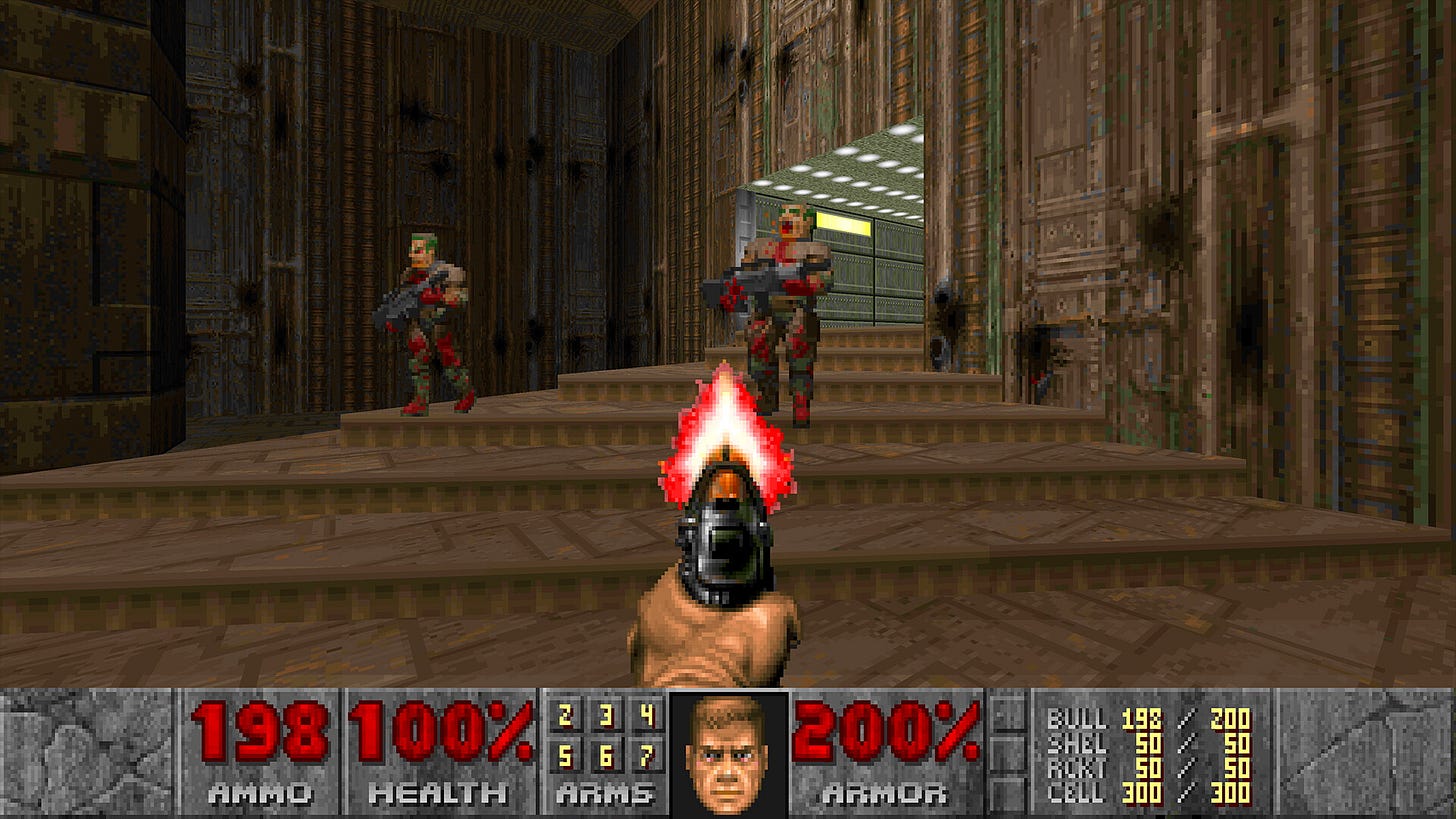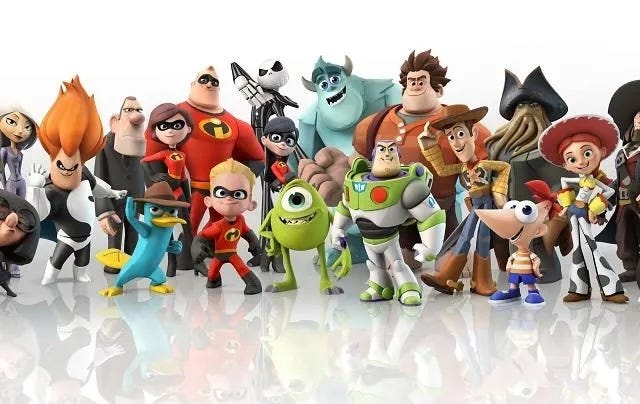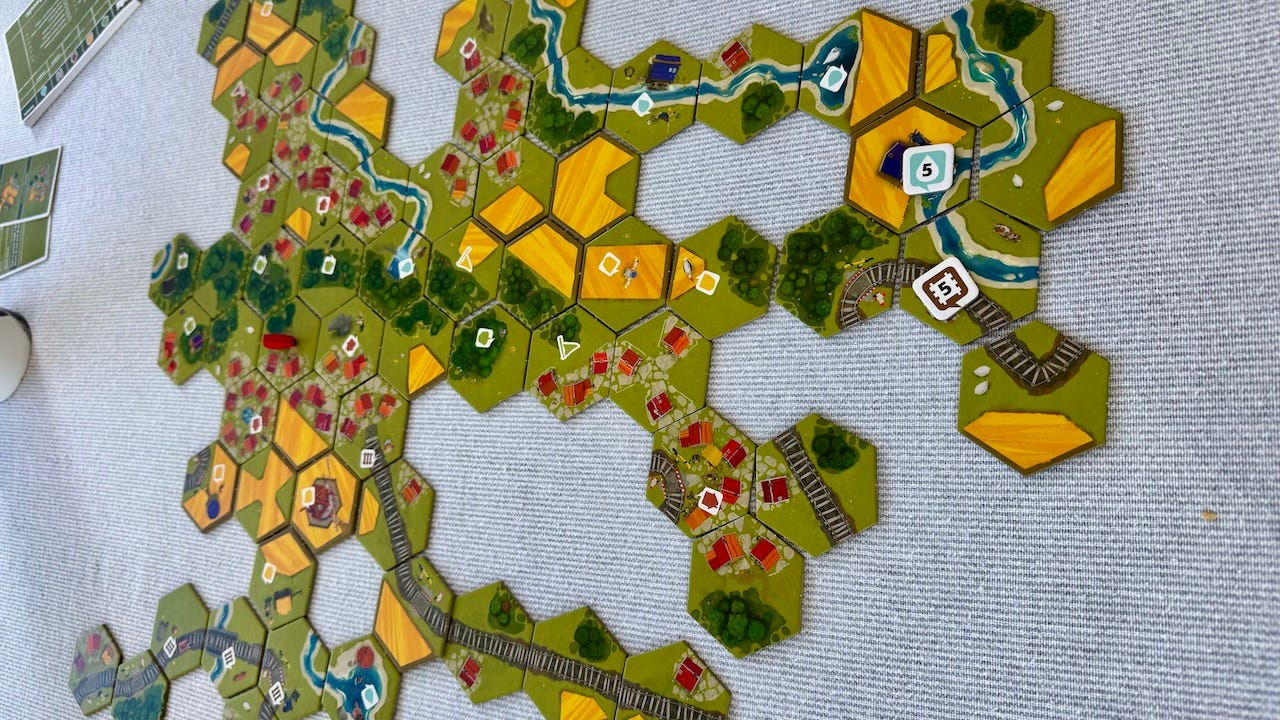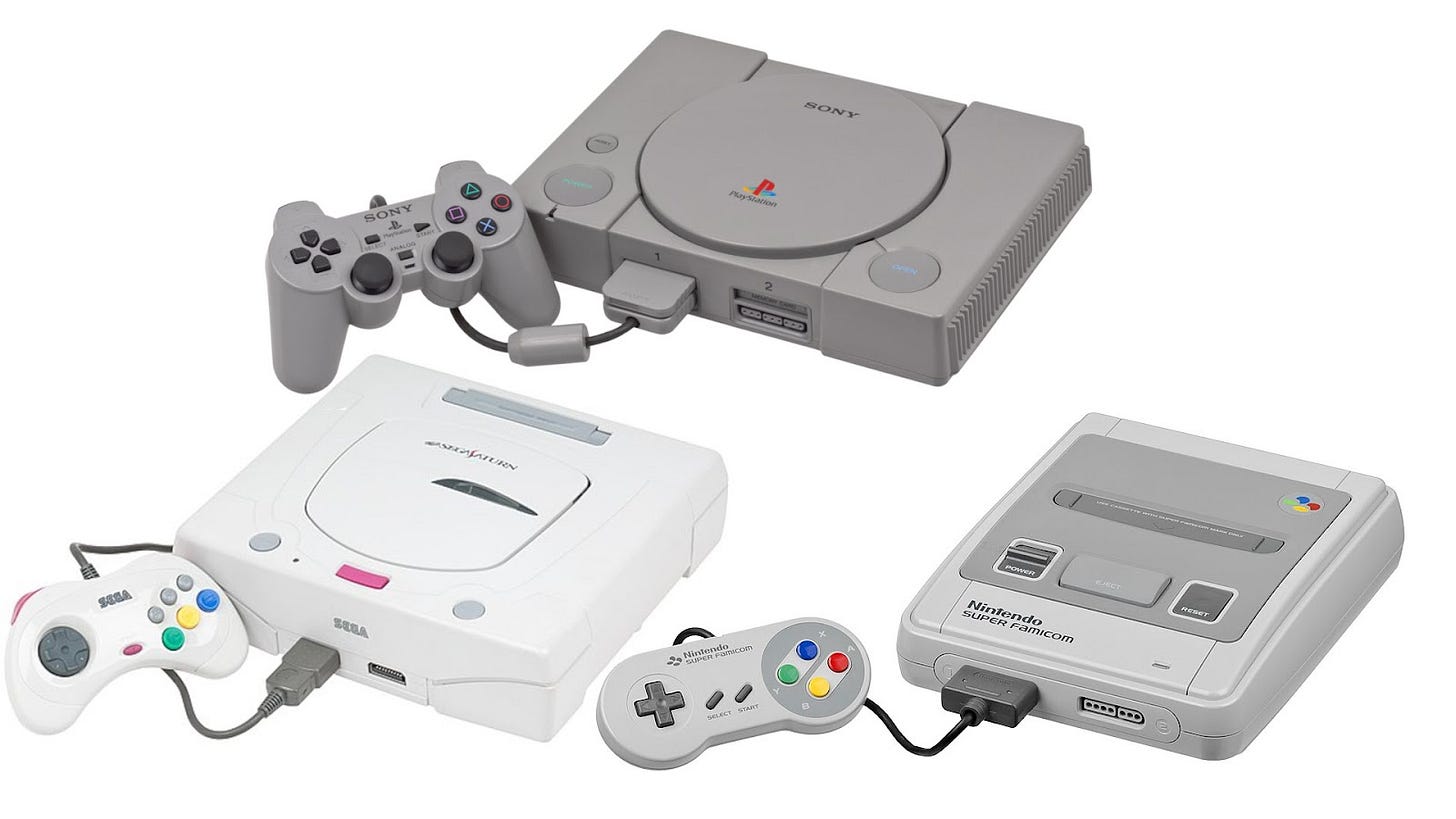Welcome to Hell, yet again
Plus Disney Fortnite, Dorf Romantik and the best-looking 90s consoles.
Hello there! I hope you’re enjoying the eerie calm before the storm of game releases, which kicks off with Black Myth Wukong next week and doesn’t let up until (*checks notes*) three months from now. I read a book this week, it was wild. In the newsletter below we’re checking out the new Doom re-release, lamenting what Disney video games have become, playing Dorf Romantik and evaluating some good ol’d grey plastic game consoles. Let’s go!
More than just another Doom release
By Tim
I mentioned the new versions of Doom last week, but now that I've actually played them I can recommend Doom + Doom II as a surprisingly excellent package.
These classics from iD Software are so old and have been released so many times that there’s definitely a sense of exasperation when you see a new version for $18. But in this case the game offers a lot more value than any of the previous versions, it’s included in Game Pass, and it’s free for anyone who already bought Doom or Doom II for current systems, which is about as fair as you can get.
Doom + Doom II is co-developed by the game preservation experts at Nightdive, and in addition to the two marquee games there are six additional chapters covering the official game releases, ranging from the Master Levels of 1995 to a new 2024 campaign created by Doom fans within iD, Nightdive and MachineGames. Each one comes with a museum-style historical write-up, plus a vault section showcasing and discussing the monsters, weapons, items and more.
A new rendering pipeline means the game will run at the maximum spec your machine supports (which sounds obvious given how old these games are, but it’s not always that easy). I checked and it effortlessly does 4K 120Hz on Xbox, 1080p 60Hz on Switch, and 1280x800 90Hz on my Steam Deck OLED.
Elsewhere the game supports achievements, cross-platform online deathmatch and co-op, has built-in community mod support (including a mod browser on console), and new accessibility options including the ability to replace the old pixelated text with a much clearer typeface.
Potentially my favourite addition though is the option of using Andrew Hulshult’s absolutely brutal orchestrated soundtrack for Doom and Doom II. I love the old Midi tracks (and you can still use them, newly restored using original hardware), but the covers are so heavy and crunchy that the games seem to regain a bit of that pulsing violent energy they’ve lost over the years.
What to play
New on Game Pass this week is Mafia: Definitive Edition, a remake of the 2002 GTA-style open world game that’s a lot like a playable Godfather film (it predates the actual open-world Godfather game by a few years).
Cult of the Lamb is currently half price, if you previously missed this Aussie-made village manager / hack-and-slash. The sale comes just in time to enjoy the new co-op mode, starring a very handsome goat.
Free right now on the Epic Games store is soulsy 2D metroidvania Death's Gambit: Afterlife.
Disney Infinity (but make it worse)
By Alice
A little over a decade ago, Disney launched Disney Infinity. It was a toys-to-life game where kids could play with their favourite Disney characters across a variety of game modes. But what made it special was that it gave kids the tools to make their own games, stories and worlds. You could have Darth Vader and Rapunzel open a shop, or have Stitch and Thor go on an open world adventure. The tag line was “if you can dream it, you can do it”. Disney hosted annual Toy Box competitions where people competed to make the best game overnight while locked in Disneyland. It was huge, until it was mismanaged and Disney decided to stop making games altogether.
But then Disney bought a stake in Epic Games, and suddenly everything old is new again.
Over the weekend Disney announced a huge, never-before-seen feature coming to Fortnite: The ability to make your own Disney-inspired stories and games with Disney characters, set pieces and toolkits in a game.
The only thing it was missing was the little plastic toys that made Disney Infinity special and collectable; beyond just a game it was something kids could keep playing with away from the screen.
On the one hand, Disney Infinity was a brilliant idea, and kids (and adults) will love being able to make their own games inspired by the company that owns everyone’s childhood.
Yet I can’t help but still feel angry for the lovely people who made Disney Infinity, who were so cruelly cast aside after decisions they didn’t make (manufacturing far too many of certain toys) worked against them. Where would we be now if they still made Disney Infinity and if this was a continuation of that?
Now, though, it’s just going to be yet another piece of content in a sprawling free-to-play game, in the hopes that kids will spend more of their parents’ money on in-game purchases. What a waste of a great idea.
Bricks, Boards and Beginnings
by Alice
Let’s talk about my new board game love: Dorf Romantik. It dares to ask the question “what if Carcassonne was cooperative and a legacy game?”
It’s a tile placement game where you work together with others at the table to achieve objectives (a river that’s 5 tiles long, for example). It’s a low stress game, where players can change without missing anything important (say, if you’re at a party, people can switch in and out as they need, or if it’s a lazy Saturday someone can come in and out while they do the laundry). Where the legacy part comes in is that after each game you score up how many points you got, and that in turn unlocks new parts of the game. There is also the ability to undo these changes, so you can play the whole campaign repeatedly, or sell the game on without being penalised.
It doesn’t call for the same commitment as a full legacy game, where the same group of people has to meet for 10-15 games to get their money’s worth. That’s a double-edged sword, because sometimes you want that excuse to hang out. But it also means that you’re not just playing the same game over and over again, which keeps things interesting, and if one member of the family is more into it than the rest, there’s no pressure on the others.
I greatly enjoyed playing it with more more keen board gaming friends, but I think it’s going to be better suited to a family situation, particularly one where conflict has been a problem in the past. It doesn’t matter if grandpa is becoming less sharp about rules, because the whole family is working together to make decisions.
If you enjoyed Carcassonne, or just the idea of Carcassonne, then you’ll likely have a great time with Dorf Romantik.
Retro Esoterica
by Tim
Last week we picked out the best looking consoles of the 1980s, and for this second part we’re moving ahead a decade. Picking just three systems from the 90s is tough, but then maybe I’m just especially fond of random curves and physical disc lid release buttons.
Super Famicom An all-time great design that these days tends to be marred by unfortunate yellowing, Nintendo’s second console masterfully splits the difference between serious powerful vibes and bubbly playful friendliness. It’s got a three-tone grey paint job, but a candy-like four colour button logo. It’s solid and symmetrical, but it’s also rounded and has those big ca-thunky power and eject mechanisms. While it’s a great pivot away from the Famicom visually, it was once again redesigned into something pretty ugly for the North American market, this time with purple accents and a wobbly curtain-like trim. Fortunately the rest of the English-speaking world got a Super Nintendo that kept the Japanese design.
Saturn It was tight between the Saturn, Dreamcast and Nintendo 64 for this spot. The Dreamcast is close but a bit too busy, and the 64 is very strange unless you’re considering the gorgeous funtastic variants. The Saturn, meanwhile, has a base level of cool owing to its mid-90s high-end electronics vibe. CDs were the new hotness, and Sega wanted you to know it with a raised lid bump, see-through window and ovular hi-fi style buttons. The original Japanese Saturn has a great blue, black and grey colour scheme. The best Saturns though are the Model 2 variants with the round buttons. Shout out to the Victor-made V Saturn with its inexplicable teal reset button, and the see-through variant that has the words “this is cool” printed on it for some reason, but my favourite is the standard white Japanese version with the pink door release. *Chef’s kiss*. All the Western Saturns are black.
PlayStation Sony’s debut console was so ubiquitous that you might look at it today and feel it’s a touch pedestrian, but it’s unquestionably an iconic and beautiful design. The three-tone grey body and rainbow logo owes a lot — not coincidentally — to the Super Famicom, but the PlayStation ages things up with square lines, adds ridged edges giving the suggestion of heat dissipation, and thoughtfully arranges its lid, buttons, controller ports and memory card slots into a pleasing but purposefully asymmetrical layout. I especially love the etched lines that connect the open button to the lid, and the power button to the status LED. There were a few very cool black and blue models produced in the form of the Net Yaroze development kits, but they’re so rare as to be essentially mythical for the purposes of picking the best console. And the tiny PSONE is cute but not that attractive, so the OG remains my favourite.










God I miss my Sony PlayStation. I bought mine on the tail end of that design, as the PS2 was looming and the PSOne was selling like hot cakes. Passed many a hour playing some iconic games like ff7 and Chrono Cross.
Sigh in nostalgia...
I miss Disney Infinity as in miss the chance to play and get those toys. I do feel sad for the company that made it got closed, that it was a nice novel ideas but now returned in a live service game with Micky and Woody shooting guns.